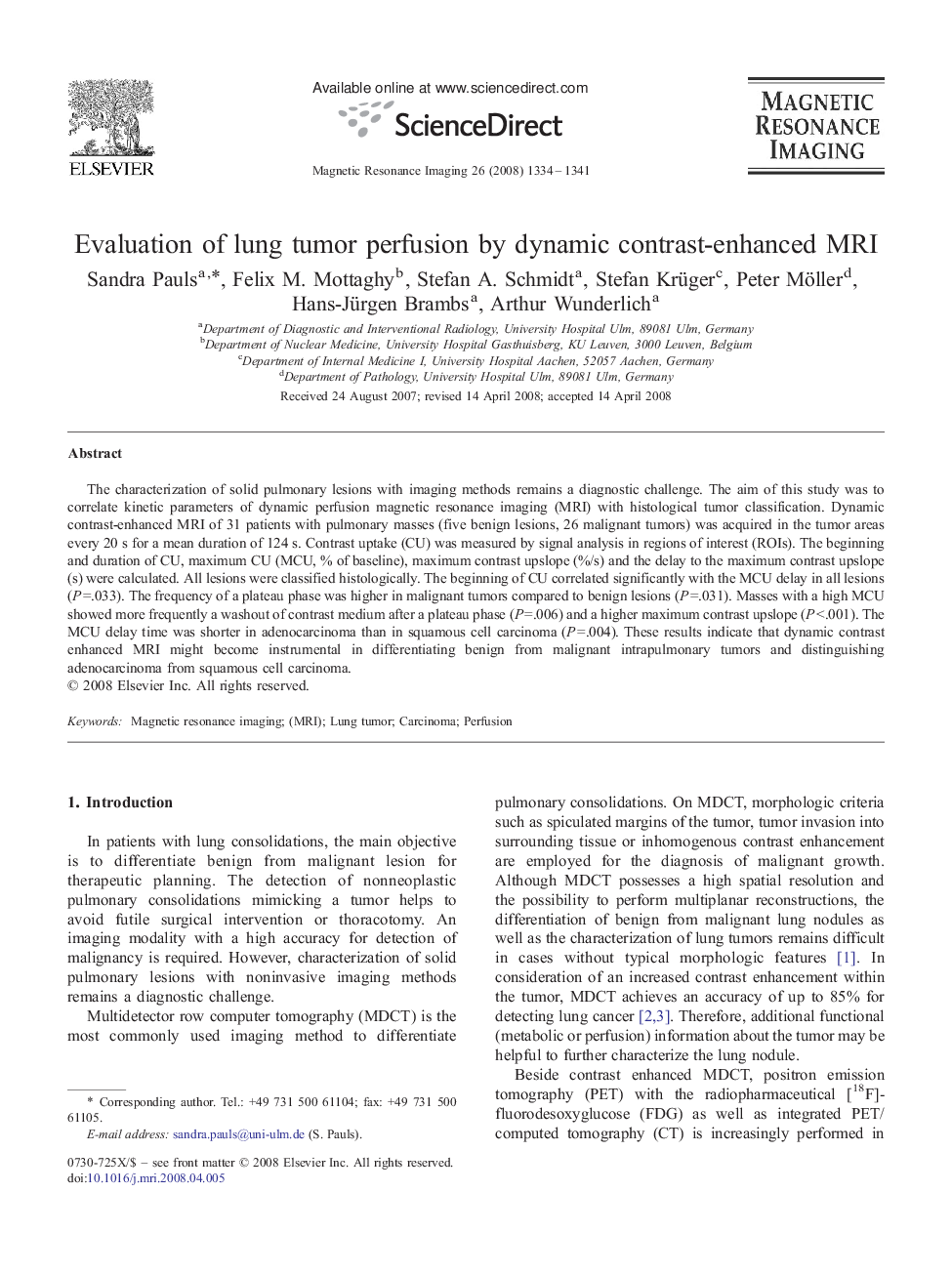| Article ID | Journal | Published Year | Pages | File Type |
|---|---|---|---|---|
| 1807292 | Magnetic Resonance Imaging | 2008 | 8 Pages |
The characterization of solid pulmonary lesions with imaging methods remains a diagnostic challenge. The aim of this study was to correlate kinetic parameters of dynamic perfusion magnetic resonance imaging (MRI) with histological tumor classification. Dynamic contrast-enhanced MRI of 31 patients with pulmonary masses (five benign lesions, 26 malignant tumors) was acquired in the tumor areas every 20 s for a mean duration of 124 s. Contrast uptake (CU) was measured by signal analysis in regions of interest (ROIs). The beginning and duration of CU, maximum CU (MCU, % of baseline), maximum contrast upslope (%/s) and the delay to the maximum contrast upslope (s) were calculated. All lesions were classified histologically. The beginning of CU correlated significantly with the MCU delay in all lesions (P=.033). The frequency of a plateau phase was higher in malignant tumors compared to benign lesions (P=.031). Masses with a high MCU showed more frequently a washout of contrast medium after a plateau phase (P=.006) and a higher maximum contrast upslope (P<.001). The MCU delay time was shorter in adenocarcinoma than in squamous cell carcinoma (P=.004). These results indicate that dynamic contrast enhanced MRI might become instrumental in differentiating benign from malignant intrapulmonary tumors and distinguishing adenocarcinoma from squamous cell carcinoma.
